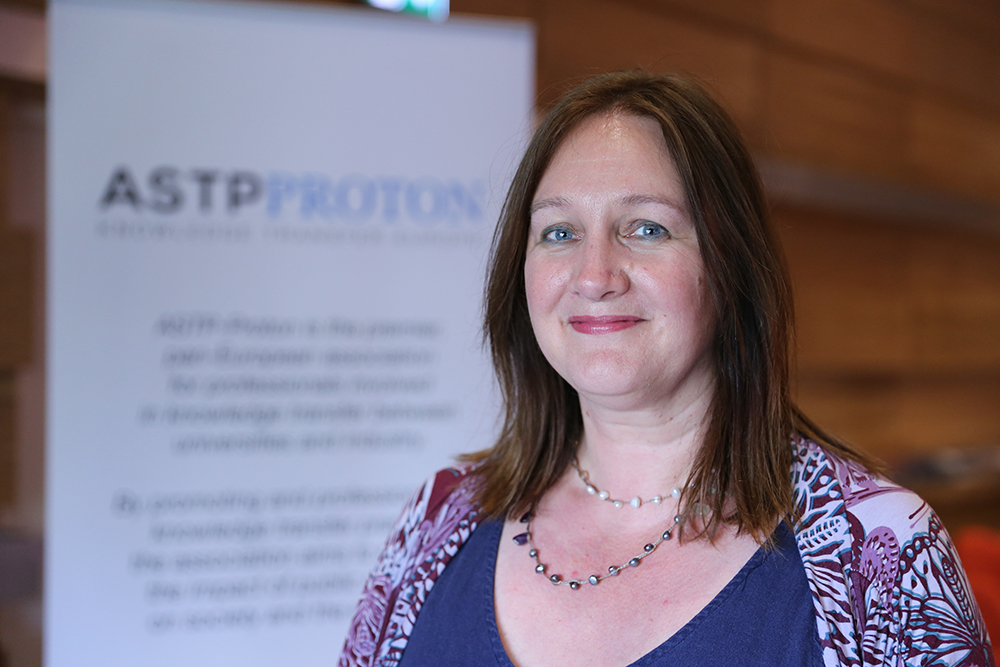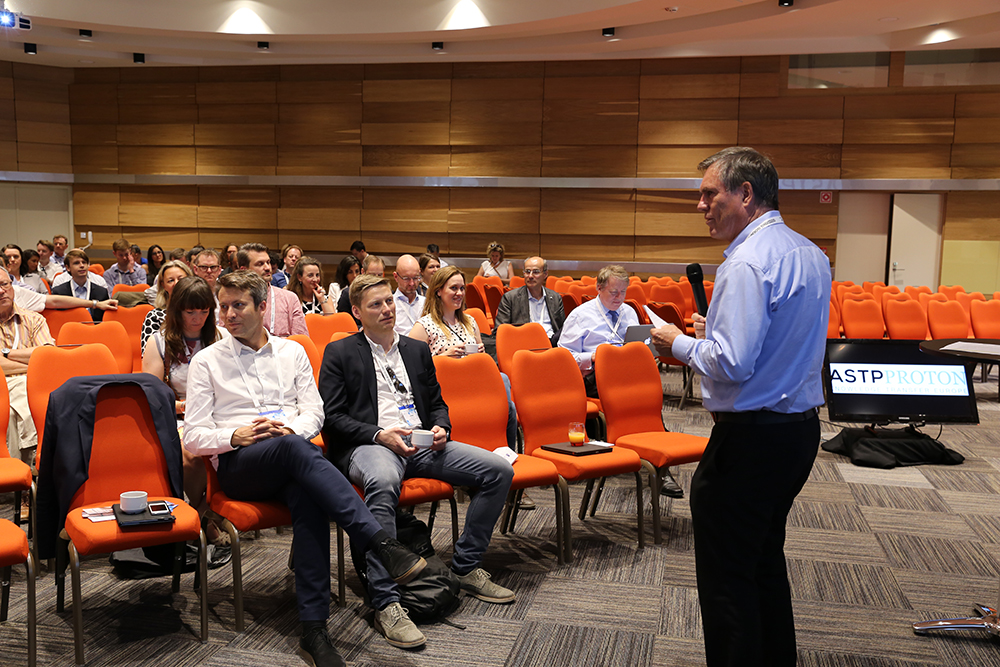Features
Laura MacDonald, MD at ASTP-Proton explains the need for a good ecosystem and talks about industry's increasing interest in university research
15 June 2017
With over 800 members, ASTP-Proton in The Hague is the largest association in Europe for professionals involved in technology knowledge transfer.
Through conferences and training programmes, exchange communities, research reports and the management of European Commission projects, ASTP-Proton bridges the worlds of business and academia to encourage collaboration and knowledge sharing. Laura MacDonald joined ASTP-Proton as General Manager in September 2016 from Leiden University where she was Head of Licensing. Here, 4iP Council speaks to Laura about the value of multi-stakeholder collaboration in technology transfer, the role of the patent system and about how to encourage more innovation in Europe.

Laura MacDonald
Managing Director ASTP-Proton
What is ASTP-Proton’s primary objective?
Our core objective is to enhance the impact of public research in the real world. The space needing support is around the people who are at the interface of where research is happening. This is the community within the innovation ecosystem who can convert research into something useful.
Time and again university researchers and business people waste time and energy getting up to speed with one another because their starting points are so different. The result is an enormous amount of lost opportunity for social benefit.
ASTP-Proton helps people at this interface understand their different perspectives. Through courses, events and by offering opportunities for negotiation practice in a neutral scenario we enable the community to professionalise their skills and achieve structured, straightforward relationships. We also encourage community members to help each other, sharing best practice and knowledge.
What is the secret of successful technology transfer?
The secret is always in the relationship. It is in the partners’ ability to understand each other and shape common goals. There can also be a degree of luck!
How is technology transfer evolving? Are models changing?
Technology transfer has gone through different eras. While universities have always been interested in their research being picked up and developed, in the past, this happened in an organic way. More recently, university management has given this support and structure.
What has evolved significantly is the pull from the outside world. There is increasing interest in universities as a source of innovation, of positive evolution and growth and, as a result, companies are more interested in how to increase their interaction with university researchers. This may be because the world of technology has evolved into so many different sectors. It is more flooded with ideas and innovations that surround us in a way that is more visible than before. This makes the need for a good ecosystem more important and that ecosystem is becoming more mature.
In a traditional technology transfer scenario university research has often already taken place without a partner; results are communicated to the knowledge transfer office and the transfer office helps find a partner from the outside world. A good example here is the research done by the John Innes Centre into prostate cancer. The researchers developed the early concepts and spun out a company to get investment. That company was acquired by a US pharmaceutical company, and a drug for prostate cancer (aberaterone) was launched in the US and the UK. So, UK public funding eventually came back to patients. There are many such examples.
If we take a look at the Structural Genomics Consortium, we see an example of much more upstream collaboration. Here, the partners got together for upstream R&D from the outset. Very often the public sector facilitates this type of collaboration and a lot more of it is happening now.

ASTP-Proton, 2017 Annual Conference, Budapest
What are the main benefits to academics and businesses of engaging in technology transfer today?
Technology transfer increases opportunities and reduces redundancy of effort because it can focus effort on well recognised problems and targets information to the right eyes and ears. It is also one of the few ways to encourage the marriage of technology and people from different disciplines.
What are the hottest innovation areas for your members today?
The Internet of Things is clearly driving discussion and the interface between ICT, technology and bio is huge. Linked to that you’ve got robotics; what else can the machine do? Many university and industry players are evolving relationships in this area to innovate and create business opportunity. In ICT specifically, every aspect of how we are dealing with data is hot: understanding it, using it, re-using it. Bioinformatics stems from this.
A perpetually hot area is the medical world: what we understand about cells and DNA, how we protect and cure ourselves, disease prevention; can we re-program the body? This area needs sophisticated tools and is cross-discipline. Another area is energy (sources, storing, recycling, organic and un-organic).
A further exciting trend is about partnering with the social sciences. People are discovering that the human aspect needs to be understood better. The implementation and application of technology involves people as users or developers and effective engagement can allow you to impact a much broader community. This is a very natural, lateral evolution and I’m aware of it because, in the technology transfer world, we are being increasingly solicited to engage with social science departments.
Do your members have concerns about technology innovation in Europe that resurface continually?
There seems to be a never-ending supply of people wanting technology transfer training and a challenge for many of them is finding the right people to talk to about a project.
Some companies, for example in the pharmaceutical and electronics sectors, have well developed ways of working with academia. Others are less good at it because it takes time, money and energy to develop a good relationship. And a group we need to focus on is the SME community, where technology transfer skills are increasingly needed.
Another concern is the gap between the technology readiness stage and the stage at which there is industry confidence to invest. That gap is proving almost impossible to sustainably fill. Venture capitalists and high-risk investors often fill it - biotechnology was based on this - but what happened there isn’t being mirrored enough in other sectors. People are generally risk averse and wary about occupying the middle space. Lack of gap funding is a serious challenge.
Another issue is that in the EU we still have a Jekyll and Hyde image of academics. We want them to be super-human, lauded for their research work yet increasingly expected to offer up their results for commercial application. We are asking academics to do two culturally different things simultaneously without the supporting infrastructure. Some are great at it but for others, it is very difficult. In the US this is less of a dilemma because academics are rewarded for successful entrepreneurial activity. I’m not sure that European policy-makers understand the breadth of the gap between the two worlds and even if so, there is a question mark over whose problem this is to solve. It is their responsibility? How does society solve such a problem?
Does the patent system hinder or help invention and technology transfer in your view? What value does it bring?
The patent system is an enormous source of knowledge for academics. It is a brilliant repository and also allows us to see who the players are. Without it, finding information would require a huge amount of work and much information would simply not be available.
The existence of patents also makes it easer for different sectors to engage with each other. Setting out commercial relationships where there are no patents can be much more difficult because, without a patent framework, there is often more work to establish a basis for contract structuring.
Also, whether we agree with the patent system or not, the economic basis of success is about being able to use a patent. If there is no possibility of a patent, many industry partners simply cannot progress an idea. The patent is the key that opens doors.
How could the patent system be improved in your view?
It would be better if there were more procedural consistency across the different patent offices such as in the timing of reports and the visibility of when a patent will come through. Having different levels of protection in different countries also makes licensing complicated.
Fees too are an issue. The UK patent office’s decision to abolish filing fees a few years ago had a huge (positive) impact on universities.
I think we hugely underestimate the value of the system as repository. It would be good if we could do more to render the information it contains more accessible as patent searching is a fine art. The Dutch office recently identified a sub-set of patents that weren’t licensed and made it searchable for such license opportunities.
Do European policy makers understand how challenging invention is for both academics and business?
We could be thinking more about the balance between real activity and impact across the different players (universities, SMEs and corporates). It would be good to understand better the impact of the outputs to ensure that public money goes to the right places. Where is the innovation most occurring? What are the barriers? And we need to look at the capacity of big companies to take on early stage investments. SMEs are often an engine here but big companies have more influence on policy. Policy-makers should listen to all stakeholders in the ecosystem and strive to understand where people are coming from.
The question is, do we really understand the ecosystem? Returning to the Structural Genomics Consortium, it arose to address the reality that 93% of DNA research effort was only looking at 7% of our genes because grant funding tends to go into areas where there is existing research. Also, negative results are never published meaning that an enormous raft of knowledge is never explored and people are repeating the same research.
Is there sufficient understanding generally of technology transfer?
Yes, in terms of its goals. Many policy-makers understand the benefit of technology transfer and are asking how it can be done better. Patent offices too are interested in this topic. However, in terms of tech transfer skills and enhancing the ecosystem, there remains much work to be done.
What is your message to academic and business innovators today who are thinking about cross-sector collaboration?
Get in a room, talk person-to-person and be open about your expectations. Openness doesn’t always happen as people tend to jump into the solution without actually sharing on why they are there and what they think success looks like. I insist on person-to-person meetings, as you have to communicate to establish a relationship and agree goals. It is like a marriage, you have to invest energy. Even if the technology doesn’t work, the relationship will and you may find something else to develop.
What advice would you offer policy-makers seeking to encourage innovation in Europe today?
Continue to improve the patent system, making it affordable, transparent and consistent; make gap funding available for early technology, and reward academics for their dual roles of academic and entrepreneurial activity.
For further information about ASTP-Proton’s activities visit https://www.astp4kt.eu/
Author: Emma Bluck
The views expressed in this feature are those of the interviewee and may not reflect the views of 4iP Council or its members. The purpose of this feature area is to reflect thinking on the topic of intellectual property and enable open discussion.



